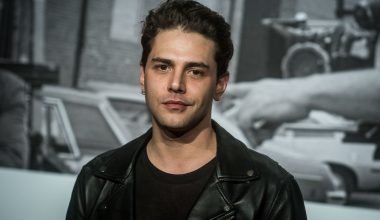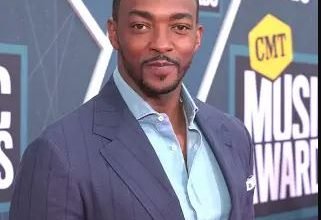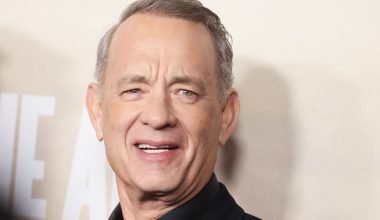The only child of artists Virginia Admiral and Robert De Niro, Robert was born in the Manhattan borough of New York City. His mother’s family tree had Dutch, English, French, and German heritage, while his father’s was Irish and Italian. He was two years old when his parents split up; they had met at Hans Hofmann’s painting courses in Provincetown, Massachusetts, but his father had come out as gay. His mother brought him up in the Manhattan districts of Little Italy and Greenwich Village. While De Niro was growing up, he had a strong relationship with his father, who resided in the area.Despite his father’s displeasure, Robert De Niro befriended several slum youngsters in Little Italy, earning him the nickname “Bobby Milk” due to his fair skin. Forever buddies have some of them.His dad had been a devout Catholic since he was 12 years old, and his mom was reared Presbyterian but became an atheist in her adult life. During his parents’ divorce, De Niro remained with his grandparents, who secretly had him baptized into the Catholic Church, against his parents’ wishes.
De Niro went to PS 41, a Manhattan public primary school, all the way up to sixth grade. He started taking acting lessons at the Dramatic Workshop when he was ten years old, and he played the role of the Cowardly Lion in the school production of The Wizard of Oz.After that, he spent seventh and eighth grade at Little Red School House’s higher school, Elizabeth Irwin High School.After that, he got into the ninth grade at the High School of Music & Art, but he didn’t stay long before moving to Charles Evans Hughes Junior High School, a public junior high.Before transferring to Rhodes Preparatory School, he was a student at McCurney School.He was so enthralled by movies and his performance skills that he left high school at the age of sixteen to pursue acting full-time.Afterwards, he said, “When I was
At approximately the age of 18, I remember staring at a TV show and thinking, “If these actors are making a living doing this, even though they aren’t very good, I can’t possibly do worse.”He attended both HB Studio and Lee Strasberg’s Actors Studio for his acting training. He was also introduced to the Stanislavski school of technique during his time studying with Stella Adler at the Stella Adler Conservatory.Margo Brando, Montgomery Clift, James Dean, Greta Garbo, Geraldine Page, and Kim Stanley were among of De Niro’s early acting influences.
Academy Awards
De Niro has had eight nominations and two wins at the Academy Awards. As a teenage Vito Corleone in The Godfather Part II, he received his first Academy Award for Best Supporting Actor in 1975. Raging Bull, in which he portrayed the unstable boxer Jake LaMotta, earned him his second Academy Award for Best Actor in 1981. In addition to his Oscars, De Niro has received a slew of additional accolades for his work. His list of accolades is long and impressive and includes wins at the Cannes Film Festival, the Golden Globes, the Screen Actors Guild, and BAFTA. De Niro has been known for his remarkable flexibility and his knack for bringing a diverse array of roles to life on screen throughout his career. With equal conviction and ease, he has performed a variety of roles, including that of a CIA agent, a boxer, a cab driver, and a mobster. Many aspiring actors and directors have found inspiration in De Niro’s groundbreaking work, which has had a profound impact on the film industry. He has also done a lot of charitable work, giving money to things like cancer research, schools, and the arts.
Golden Globe Awards
GolRobert De Niro is a famous actor who has won several Golden Globe Awards.
The last time he won was in 2011 for his role in Silver Linings Playbook. He’s
known for his amazing acting skills and has been in many great movies.
Martin Scorsese collaborations
Martin Scorsese and Robert De Niro have been working together for quite some time, and their films are among the all-time greats. De Niro and Scorsese have collaborated on a plethora of legendary films, including Taxi Driver, Raging Bull, Goodfellas, and many more. On several occasions, De Niro has praised Scorsese for his skill as an actor and his ability to elevate his cast. He says that Scorsese was essential in his development as an actor by encouraging him to tackle difficult parts that tested his acting chops.
Their exceptional degree of trust and mutual respect is the key to the success of their partnership. De Niro has faith in Scorsese’s direction and vision, and the director understands how to bring out the actor’s greatest performance.
Scorsese and De Niro would go on to work together on other occasions after this picture. Not only that, but it was Scorsese’s first financially and critically successful film. In 1997, the Library of Congress decided that Mean Streets was “aesthetically significant,” “culturally significant,” or “historically significant” enough to be included in the US National Film Registry.
Mean Street
The 1973 American criminal thriller Mean Streets stars Robert De Niro and Harvey Keitel and was produced by Martin Scorsese and co-written by Mardik Martin. Warner Bros. was in charge of producing it. On October 2, 1973, the picture had its world debut at the New York picture Festival. On October 14, 1973, it was distributed to the public. As the winner of the
He won Best Supporting Actor from the New York Film Critics Circle and the National Society of Film Critics for his performance as Johnny Boy Civello. In the film, Robert De Niro plays the role of John Johnny Boy Civello, Harvey Keitel plays the role of Charlie Cappa, David Proval plays the role of Tony DeVienazo, Amy Robinson plays the role of Teresa Ronchelli, Victor Argo plays the role of Mario, Richard Romanus plays the role of Michael Longo, Cesare Danova plays the role of Giovanni Cappa, George Memmoli plays Joey, Jeannie Bell plays Diane, Harry Northup plays Soldier, David Carradine is Drunk, and Martin Scorsese lends his voice to Jimmy Shorts.
Many critics have praised the film Mean Streets. They find it moving and distinctive. Notable filmmakers like Spike Lee and Kathryn Bigelow have acknowledged its impact on their work. Roger Ebert has given it good reviews, and it’s on many lists of the best films of all time. Many are enthralled by the portrayal of urban life and the storyline. Overall, it has received rave reviews from reviewers and viewers alike, solidifying its status as a must-watch.
The Godfather Part II
American epic crime film The Godfather Part II was released in 1974. The Godfather, written by Mario Puzo and co-written with Francis Ford Coppola in 1969, serves as a loose inspiration for the film, which Coppola both produces and directs. The film serves as a prequel to Robert De Niro’s Sicilian childhood and a sequel to Al Pacino’s Michael Corleone’s (Al Pacino) 1958 story of becoming Don of the Corleone family and protecting the family business after a life-threatening attempt. The two plots run parallel to each other in the 1972 film The Godfather. Among the other actors in the ensemble are Robert Duvall, Talia Shire, John Casale, Mariana Hill, and Lee Strasberg.
As a prequel and sequel to the first Godfather film, Francis Ford Coppola was allowed greater creative freedom by Paramount Pictures to create The Godfather Part II. It was released in 1974 to mixed reviews but eventually became critically acclaimed. On a budget of under $13 million, it won six Oscars, including Best Picture, and earned $93 million worldwide.
It shaped the gangster genre and is now included in the United States National Film Registry; it is widely regarded as one of the best pictures of all time. “The Godfather Part III,” the third and last installment, was released in 1990 and had a diminishing quality compared to its success.
Taxi Driver
In the 1976 American neo-noir psychological thriller Taxi Driver, stars Robert De Niro, Jodie Foster, Cybill Shepherd, Harvey Keitel, Peter Boyle, Leonard Harris, and Albert Brooks, the picture was written by Paul Schrader and directed by Martin Scorsese. Set in a morally corrupt and decaying New York metropolis in the aftermath of the Vietnam War, the film chronicles the mental decline of veteran and cab driver Travis Bickle (De Niro) as he works the night shifts in the metropolis.
The film was controversial due to its depiction of graphic violence in the last scene and the casting of Foster, who was 12-years-old at the time, as a child prostitute; yet, it was a commercial and critical triumph upon its theatrical release by Columbia Pictures on February 7, 1976. The film was nominated for four Oscars, including Best Picture, Best Actor (Robert De Niro), and Best Supporting Actress (Joan Foster), among many other honors, including the Palme d’Or at the 1976 Cannes Film Festival.
Despite taxi driver’s controversial portrayal of John Hinckley Jr.’s motivation to try to murder Ronald Reagan, the film has maintained its popularity and is regarded as one of the most culturally significant and influential films of all time.
cult reputation, was groundbreaking for its day, and is now considered one of the best films of all time.[6] Along with Barry Lyndon, it was ranked as the twelfth-greatest picture of all time in the directors’ vote and as the 29th-best film of all time in the decennial critics’ poll conducted by Sight & Sound in 2022. The picture was chosen for preservation in the National picture Registry in 1994 after being deemed “culturally, historically, or aesthetically” important by the U.S. Library of Congress.
Raging Bull
The 1980 Martin Scorsese biographical sports drama Raging Bull featured Robert De Niro, Joe Pesci, Cathy Moriarty, Frank Vincent, Nicholas Colasanto, and Theresa Saldana. The film was directed by Scorsese. The film is based on the 1970 autobiography Raging Bull: My Story, written by former middleweight boxing champion Jake LaMotta.
It chronicles Robert De Niro’s (played by Johnny Depp) career as boxer LaMotta, tracing his ascent and collapse in the industry as well as his tumultuous personal life, characterized by anger and envy.
The theatrical release of Raging Bull occurred on December 19, 1980, following its November 14, 1980, premiere in New York City. The film’s $23.4 million in box office receipts pale in comparison to its $18 million production costs. After its release, the film’s reception was uneven; some praised Robert De Niro’s acting and the editing, while others panned it for being too violent. At the 53rd Academy Awards, the picture was nominated for eight awards (tied with The Elephant Man for most nominations), two of which were won: Best Editing and Best Actor (Robert De Niro’s second Oscar) despite the film’s poor reviews.
Cape Fear
The American psychological thriller Cape Fear was directed by Martin Scorsese in 1991. This film is an updated version of the original 1962 version, which in turn was adapted from John D. MacDonald’s 1957 book The Executioners. Among the actors featured in the picture are Juliette Lewis, Joe Don Baker, Jessica Lange, Nick Nolte, and Robert De Niro. Three actors who were in the previous film—Robert Mitchum, Gregory Peck (in his last role in a theatrical picture), and Martin Balsam—make cameo appearances or have tiny roles in this sequel. The film follows a brutal rapist on death row as he uses his newfound understanding of the legal system to get revenge on a former public lawyer, whom he holds responsible for his 14 years in jail for willfully incorrect defense strategies. Cape Fear is Martin Scorsese and Robert De Niro’s sixth film together. Critics were mostly complimentary, and the picture did well at the box office. Several accolades were considered for it, including Best Supporting Actress (Juliette Lewis) and Best Actor (Robert De Niro) at the Golden Globes and the Academy accolades.
Zero Day
Through the eyes of two adolescent males who plot and execute a made-up school shooting, the recovered video film “Zero Day” tells the story of the incident. The film delves into their goals, preparations, and the sequence of events that transpired before the terrible day. But Robert De Niro isn’t working on this picture in any way. You could be imagining something else entirely, or you might be mixing this up with another Robert De Niro project.






